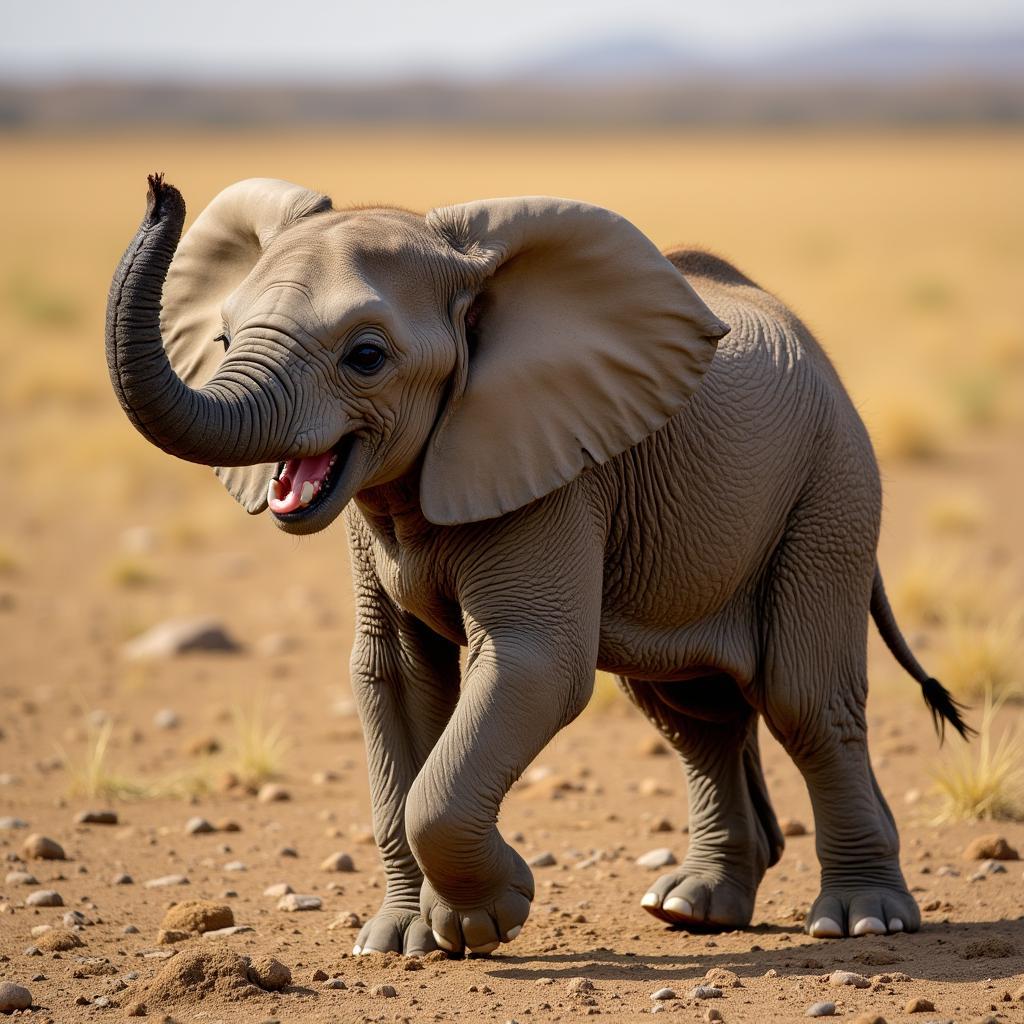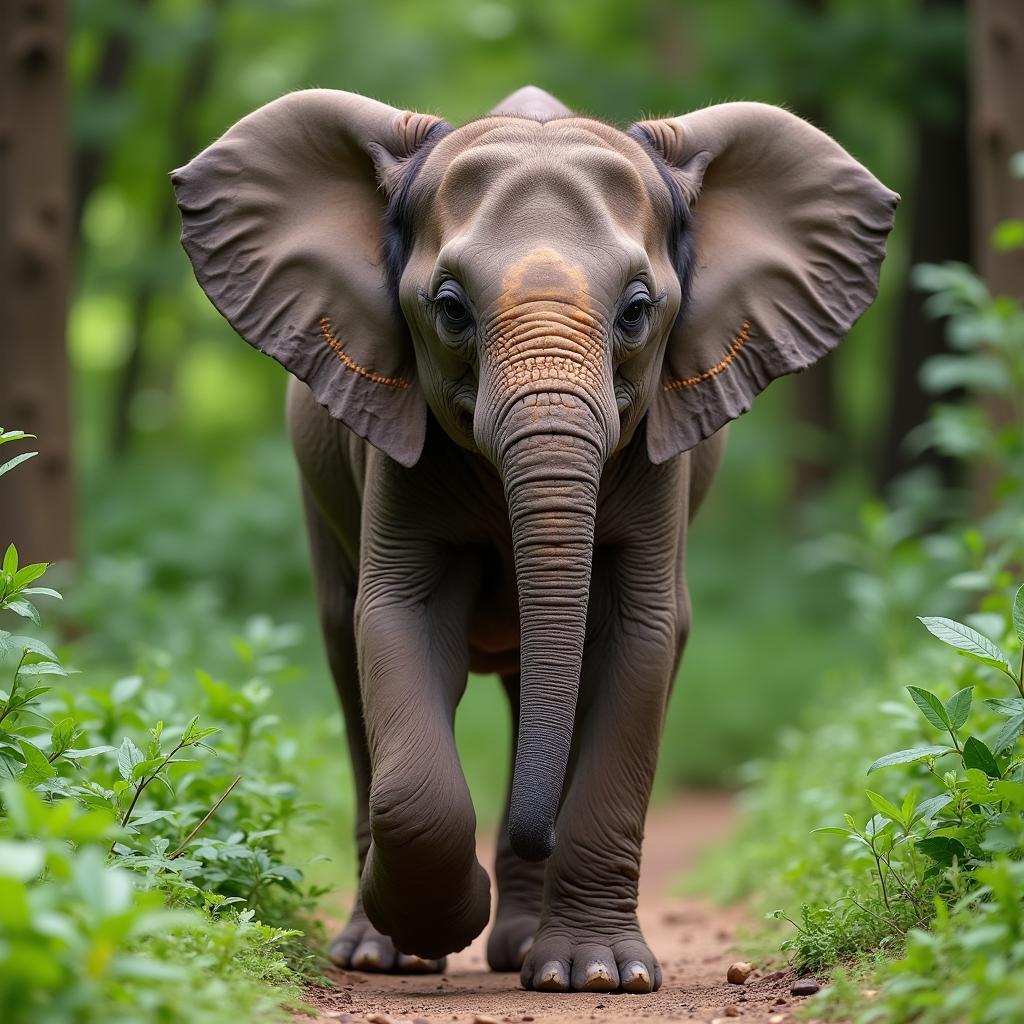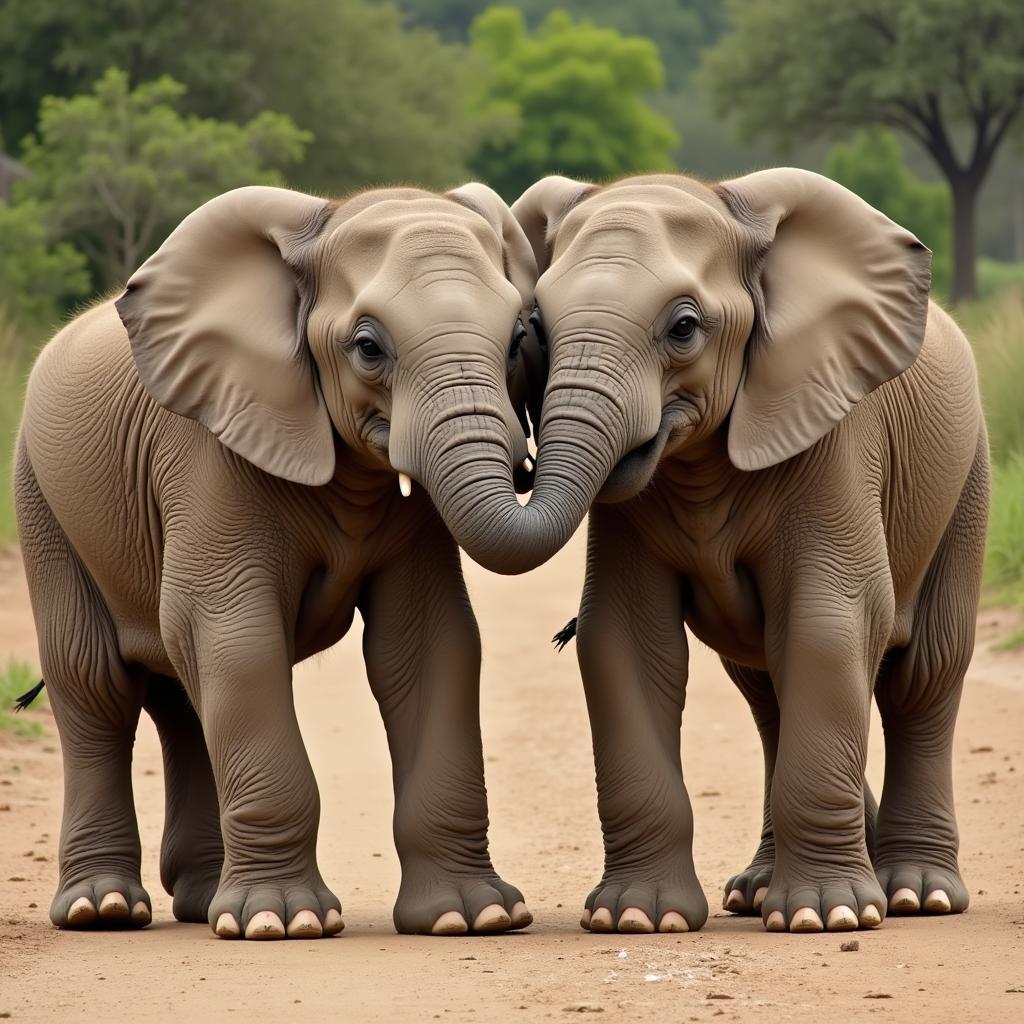African Elephant Baby vs Indian Elephant Baby: Spotting the Differences
When picturing an elephant calf, a heart-melting image of a miniature giant comes to mind. But did you know that not all baby elephants are created equal? While sharing the same family tree, African and Indian elephant babies exhibit distinct features that set them apart. Let’s delve into the captivating world of these gentle giants and uncover the fascinating differences between their adorable offspring.
Size and Stature: A Tale of Two Continents
One of the most noticeable distinctions lies in their size. African elephant babies, hailing from the vast savannas, are significantly larger than their Asian counterparts. At birth, an African elephant calf can weigh a whopping 200 pounds, dwarfing an Indian elephant baby, who typically weighs around 100 pounds. This size difference reflects the generally larger stature of African elephants, the largest land mammals on Earth.
 African Elephant Calf on the Savannah
African Elephant Calf on the Savannah
Ears that Tell a Tale: Identifying the Giants
The ears serve as a telltale sign when differentiating between African and Indian elephant babies. African elephant calves boast large, fan-shaped ears that resemble the African continent itself. These enormous ears play a crucial role in regulating body temperature, acting as efficient heat radiators in the hot African climate.
Indian elephant babies, on the other hand, have smaller, more rounded ears that are proportionate to their overall body size. These ears, while still essential for hearing and communication, reflect their adaptation to the cooler, forested regions of Asia.
Trunk Talk: Subtle Differences in a Vital Tool
The trunk, an elephant’s most versatile appendage, also presents subtle differences between the two species. African elephant babies have two finger-like projections at the tip of their trunks, allowing for greater dexterity in grasping small objects, such as leaves and fruits.
Indian elephant babies, however, possess only one finger-like projection, relying more on their trunk’s strength and flexibility to gather food and interact with their surroundings.
 Indian Elephant Calf in a Forest
Indian Elephant Calf in a Forest
Head Shape and Back: Clues to Ancestry
A closer look at the head and back reveals further distinctions. African elephant babies have a rounder head shape compared to the slightly sloping forehead of their Indian counterparts. Additionally, the back of an African elephant calf is generally concave, while an Indian elephant baby exhibits a more convex or straight backline.
These subtle differences in skeletal structure contribute to the overall appearance and posture of the two species, highlighting the fascinating evolutionary adaptations that have shaped these magnificent creatures.
Skin Deep: Variations in Color and Texture
Even the skin tells a story. African elephant babies are generally darker in color, sporting a grayish-brown hue, while Indian elephant babies tend to have lighter, more brownish-gray skin. The skin texture also varies, with African elephant calves having a rougher, more wrinkled appearance, particularly on their trunks. Indian elephant babies, in contrast, exhibit smoother skin with patches of lighter pigmentation, often referred to as “depigmentation.”
Beyond Appearance: Behavioral Traits
Beyond physical characteristics, behavioral differences also manifest from an early age. African elephant babies tend to be more independent and adventurous, venturing further away from their mothers to explore their surroundings. This independent streak aligns with the social structure of African elephant herds, where calves rely on the collective care of multiple females.
Indian elephant babies, on the other hand, display a stronger attachment to their mothers and often stay in close proximity. This close bond reflects the more matriarchal social structure of Asian elephant herds, where the mother plays a central role in raising and protecting her offspring.
 African and Indian Elephant Calves Playing
African and Indian Elephant Calves Playing
A World of Wonder: Celebrating Elephant Diversity
Understanding the differences between African and Indian elephant babies not only satisfies our curiosity but also fosters a deeper appreciation for the remarkable diversity within the elephant family. These gentle giants, each with their unique characteristics and adaptations, play vital roles in their respective ecosystems and deserve our utmost respect and protection. By learning about and celebrating their differences, we contribute to a future where both African and Indian elephants can thrive in the wild for generations to come.


